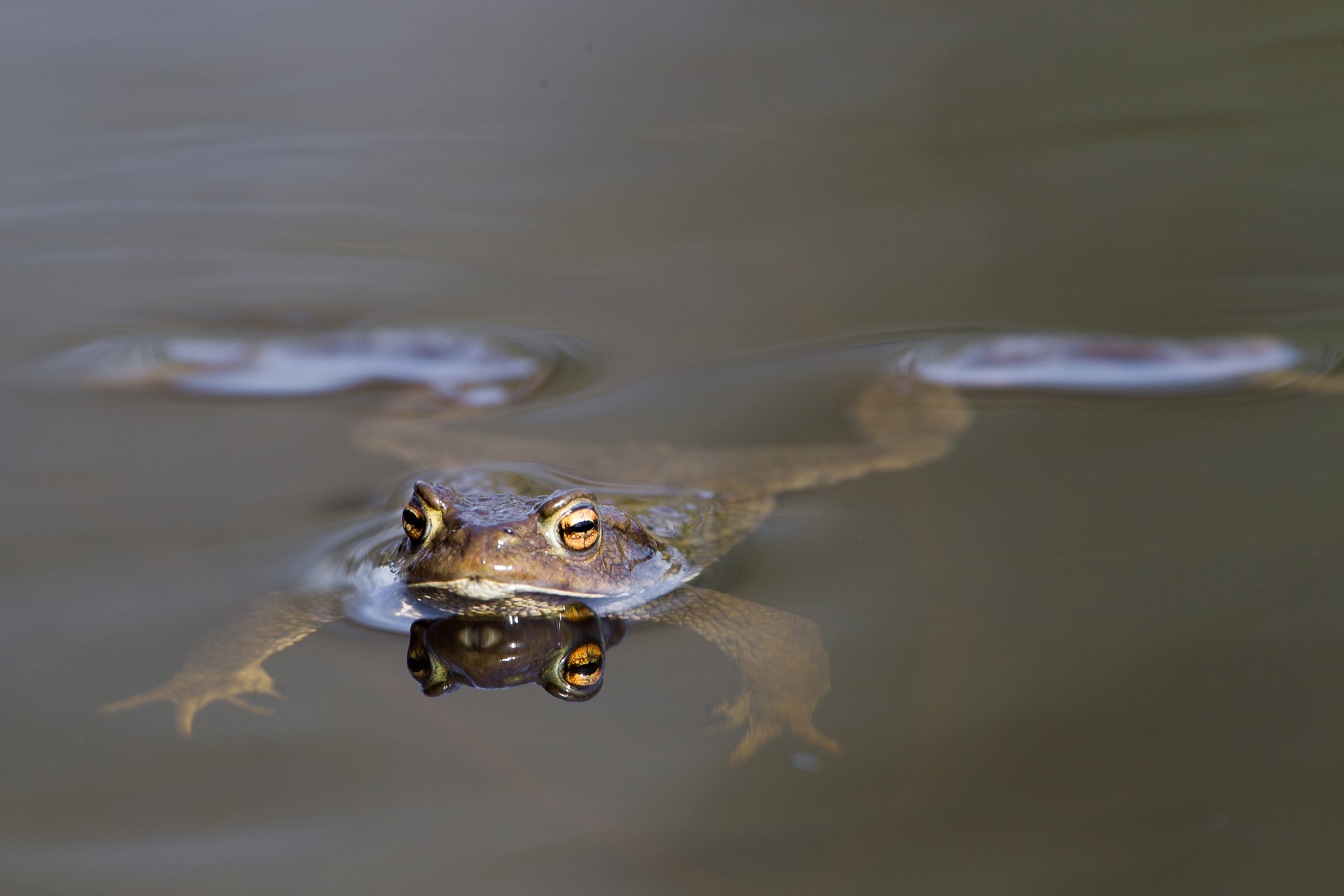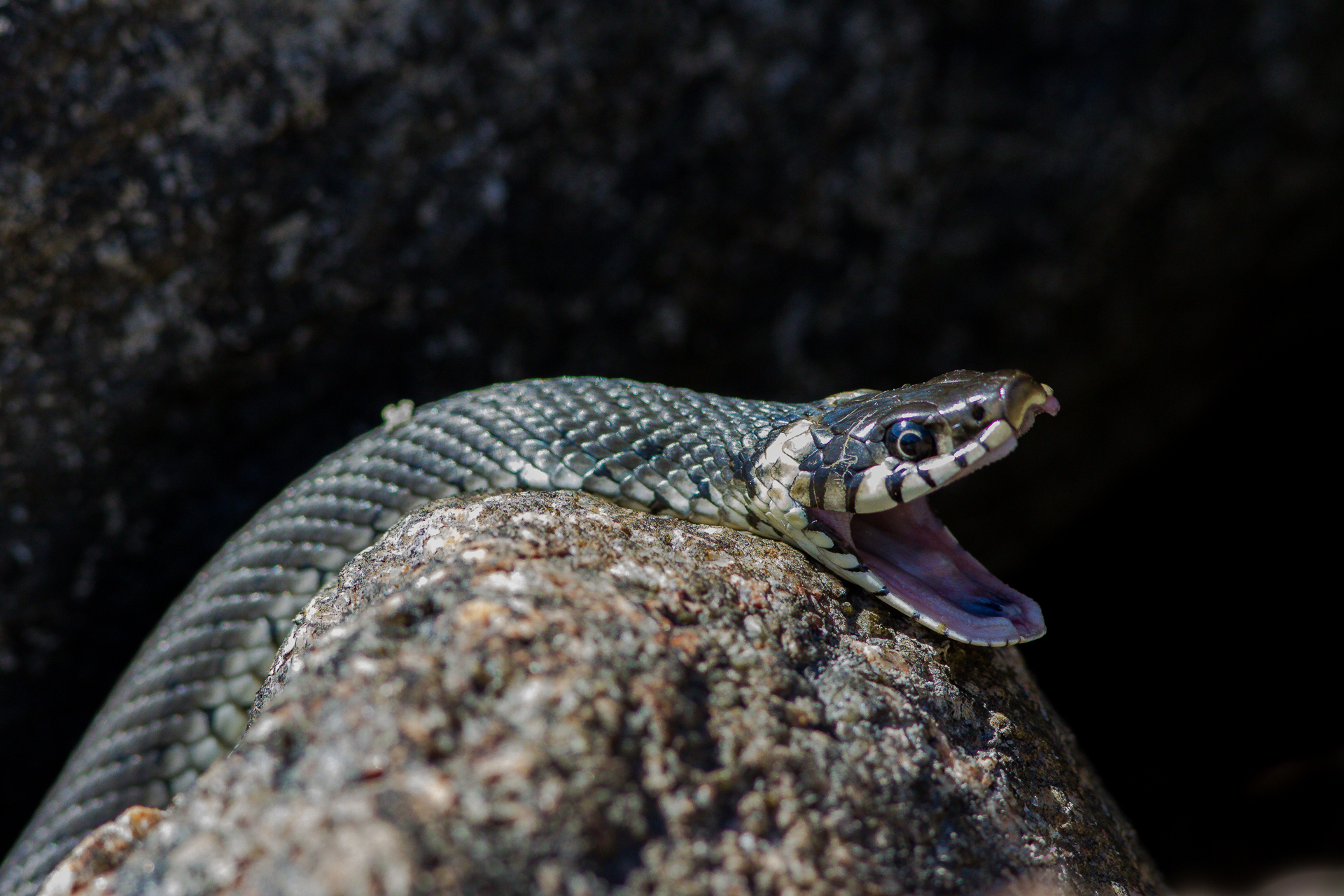Frogs and snakes lay low for the winter
Amphibians and reptiles are ectothermic, i.e. “cold-blooded”, which means that they cannot regulate their body temperature in the way that mammals and birds can. As the temperature drops, their vital functions and movements start to slow down, and with food also becoming scarce, their only option is to enter a state of hibernation, also called brumation, for the winter. During brumation, frogs and snakes slow down their metabolism to such a degree that they only barely stay alive. Their body temperature drops to near zero, while their bodies use the energy reserves built up over summer to maintain essential bodily functions. On Ruissalo, the brumation period lasts for almost half a year.
Once night-time temperatures drop to around zero in October, the frogs of Ruissalo stop eating and start seeking out their usual hibernation spots. Usually this means a suitably large pond or sea bay, in the bottom mud of which frogs can safely hibernate for the next six months. Some frogs also hibernate in holes in the ground that are below the frost limit. Smooth newts also hibernate in the bottom mud of small water bodies or holes in the ground.
The two snake species found on Ruissalo, the common European adder and the grass snake, also hibernate in the winter. Common European adders start seeking out rocky holes and underground places where they can keep their body temperature as consistent as possible in September–October. The most popular hibernation spots are used year after year and can accommodate dozens, sometimes even hundreds of individual snakes. The same hollows may also be used as hibernation spots by frogs, even though they are preyed upon by snakes in the summer. When it comes to amphibian and reptilian hibernation, it seems that there’s room for all at a pinch. Grass snakes start their hibernation slightly earlier than common European adders, favouring piles of rocks and crags near shores.

